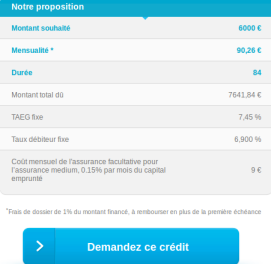Casino Banque Simulation
Download Cashappearn.com APK by Android Developer For Free (Android). Cashappearn.com apk - Download APK Apps and Games for Android Devices. Enjoy Android Apps For Free! Monte Carlo simulations have been widely used by microscopists for the last few decades. In the beginning it was a tedious and slow process, requiring a high level of computer skills from users. Jouer Enligne FR Ouvrez votre propre casino en ligne. Par Liza Sternkatz. Le monde du jeu en ligne est en pleine expansion, tout le monde, avec un peu d'ambition, peut en tirer parti. Monte Carlo simulations have been widely used by microscopists for the last few decades. In the beginning it was a tedious and slow process, requiring a high level of computer skills from users and long computational times. Recent progress in the microelectronics industry now provides researchers with affordable desktop computers with clock rates greater than 3 GHz. With this type of computing.
This casino game return and variance simulator lists the expected return of a bonus, chance of gain, and chance of busting. As the name implies, results are determined by random simulation. Longer simulations may cause your browser to produce a slow or unresponsive script warning.
E very casino, race track, cruise and hospitality location has days that are slower than others. And, you most likely have areas like slot, card or dice, that need increased customer count and player wagering.
The required inputs are deposit, bonus, wagering, bet size, simulations, and possibly unlimited bankroll. For example, 100% match bonus of 100€ with a 10x(B+D) wagering requirement, you would input a deposit and bonus of “100” and a wagering of 10×200=”2000″.

To check variance and expected return for play without bonuses, leave the bonus input at 0. “Simulations” is the number of times the bonus wagering will be simulated. A higher value increases accuracy and time taken by the simulator. Check the unlimited bankroll box to simulate a after-wager bonus or other bonus where you would redeposit until completing the wagering. Leave the box unchecked to simulate a bonus where the wagering ends, if you bust and lose your full balance. The simulator returns text outputs, as well as a graph. Standard paytables are assumed for all the games.
Let’s look at Table 1 and see how the system works.
We set the number to take your winnings from the table to 4. That means if either Black or Red repeats 5 times, your Winning Streak number will reach 4, where you remove your winnings. Otherwise, you leave them on the table. This term of “leaving on the table” refers of course to land casinos. On online casinos, you would just be betting your winnings again on the same color without adding any additional units on top of your initial chip. That means if your color wins, you take your chips and the profit and bet on the same color the amount that you won until you accumulate 16 chips. Then you reduce back to one chip again, based on the rules of the system.
We’re looking at the above Table 1, and let’s assume that we are playing in a real casino, for now.
You come to the Roulette table, and you see in sequence 1 that the last decision was number 28, Black. So you place one $10 chip on Black as indicated in sequence 2 with “B” under column Bet Black or Red. Number 23 shows up, which is a Red and you lose your chip. Your net profit is -$10 as indicated in column Net.
Since you lost your chip, it can’t multiply, so you need to place a new $10 chip on the last color that showed up, which is on Red, as indicated by “R” in sequence 3.
Number 36 appears, which is a Red, you win, but you don’t take your chips. That’s why the Cash column shows a -$10 despite the fact that you won that bet. You leave your 2 chips on the table on Red again.
The ball lands on zero in sequence 4, as indicated by “G” (for Green). That interrupts and terminates your winning sequence.
Your two chips are gone and your net profit is at -$20.
Since a zero came, you don’t place any chips on your next bet in sequence 5. You wait until the color is established. Number 1, Red comes up. So you bet 1 chip on Red in sequence 6. Number 26, Black comes up. You lose your chip. Your net is down to -$30.
Since you lost your chip and Black came, you bet 1 chip on Black in sequence 7. Your net is presently -$40. Number 31, Black comes up, you win and you leave your two $10 chips on the table.
In sequence 8, Black comes again. You win and you leave your 4 chips on the table on Black.
In sequence 9, Black repeats again. You win and you leave your 8 chips on the table. Remember you don’t touch your chips until they become 16. In sequence 10, Red is rolled. You lose your 8 chips that accumulated so far. But you haven’t really lost more than the one $10 chip that started the escalation in sequence 7, you haven’t placed any additional chips since. So, those were 4 sequences in the run, but only 1 chip lost. It’s painful to see $80 disappearing in front of your eyes, but those are the rules. Patience will pay off.
Let us assume you haven’t broken the rules and that you are willing to go on playing as you determined at the start, you will wait for 4 consecutive wins. Since you lost in sequence 10 and Red showed up, now you place a $10 chip on Red in sequence 11. Your net profit shows -$50. Number 9, Red comes up. You win. You leave your 2 chips on the table.
In sequence 12, Red shows up again. You win. You leave your 4 chips on the table.
In sequence 13, it’s Red again. You win. You leave your 8 chips on the table. In sequence 14, what you’ve been hoping for happens. Red repeats for the 5th time. You have won four times in a row. You have 16 X $10 chips in front of you and you grab them. Your net profit goes from -$50 to +$110. Patience did pay off. It was going to happen sooner or later. It is not unusual for 5 consecutive same-decisions to happen.


In our simulation, Red comes up 8 times in a row between sequences 10 to 17. That is something interesting to note. Since you have set your winning grab time to 4 and you have already grabbed your 16 chips, you don’t place any until Red is replaced by Black. This is where you have mixed feelings again. Red has shown up 8 times. You say to yourself, you could have cashed $1280 on a run of 7 consecutive Reds, instead of $160, but you decided at the outset you were going to take your money after a run of 4 wins. Realize that setting this number to 7 will make you lose all the opportunities of grabbing your winnings at the 4th, 5th, 6th time, which will occur more often than 8 repeats or 7 consecutive wins.
There is a tradeoff we need to accept: wait longer to win more, but lose a few units in the meantime by the time the 7th winnings happens, or grab your winnings more frequently at smaller profits. Once you see all the upcoming simulations, you will be able to make the decision that’s right for you. If we go on observing Table 1, we grab our $160 at sequence 14 and since we were betting on Red, we don’t bet until Black comes up. And this happens in sequence 18.

So, in sequence 19, we place 1 $10 chip again on Black. This time Black comes up 5 times in a row and we keep betting on Black as long as it doesn’t change to Red. We cash another $160 or 16 X $10 chips in sequence 22.
Black shows up one more time, but we have placed no bets in sequence 23, as Black has not been replaced by Red yet.
In sequence 24, Red is rolled. Therefore we place one chip on Red in sequence 25.
You can follow the rest of the table and observe the way we bet. You always place one chip on the previous color, one spin after the color changes. If the color repeats, you leave your chips on the table, until you win 4 times in a row. If the color changes, you place a chip on the new color. If a zero comes up, you don’t make a bet, you wait for the next color to come up. Then you place one chip on that color. And so on.
As you can see, whichever color is the repeating one, you end up betting on that one, based on the rules of the system. That way you don’t miss any color, should it repeat more than once.
The peak profit reached in Table 1 was 61 units of $610 and it has occurred in sequence 154. Different runs of this simulation will produce different results with different peaks. You should always make sure to quit at a point when you are well ahead. One good strategy is to quit once the profit is reduced to half of your highest total. So in Table 1, since the peak profit was at $610, it’s recommended that you quit while you are still ahead by half of this amount, +$305. In Table 1 that doesn’t happen until sequence 200, but it has a tendency to go in that direction.
Or, another strategy is to quit if you are $100 below that peak, at about $510, which happens at sequence 170.
If you can manage it, you can play this method simultaneously in three different areas: on Black/Red and on Even/Odd and on High/Low, using the exact same system as above. If you are betting on Even/Odd for instance, then you place one chip on Even if the previous number was Even. If you are betting on High/Low at the same time, you place one chip on Low if the previous number was 18 or lower. Then follow exactly the same pattern as for Red/Black discussed above. When you play in 3 different areas simultaneously, you are of course betting three $10 chips at the start, then you either bet or don’t bet depending on whether Even/Odd or High/Low repeats or not. So you don’t always have 3 chips on the table. It will depend on the various repetition patterns of Red/Black, Even/Odd, and High/Low.
Banque Casino Contact
As stated before, this system can be used for Baccarat and Craps. In Baccarat you would place your bet on Player for instance, and if you win you would place your bet plus your winnings on Player until Player wins 4 times in a row. When Banker wins, you would switch to Banker.
Likewise in Craps; you place a bet on the Pass Line for instance. And if you win, you would place your bet plus your winnings on the Pass Line again until Pass repeats 4 times. If Pass doesn’t repeat, you will switch to Don’t Pass and follow the same pattern.
Banque Casino Simulation Pret
Now, let’s observe some simulations where we follow the same rules, but values for repeat times have been set differently. Table 2 below is set for 3, that is, you collect your winnings when a color repeated 4 times, meaning you have won 3 times in a row.